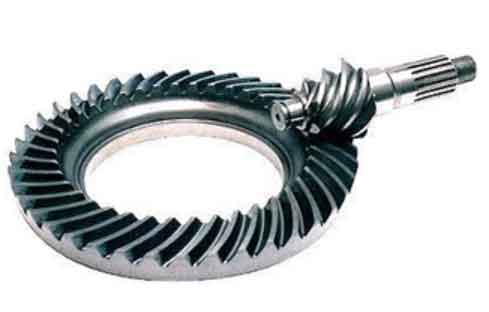Maintenance and inspection of hypoid gears are crucial for ensuring their reliable operation. Here are some key steps and considerations to keep in mind:

- Regular Lubrication: Hypoid gears require proper lubrication to minimize friction and wear. Follow the manufacturer’s recommendations regarding the type and frequency of lubricant changes. Maintain the appropriate oil level and monitor its condition regularly.
- Visual Inspection: Conduct visual inspections of the gear teeth and housing for any signs of damage, such as cracks, chips, or excessive wear. Inspect the gear meshing area to ensure proper alignment and contact patterns.
- Noise and Vibration Analysis: Listen for abnormal noise or vibrations during gear operation. Unusual sounds or vibrations may indicate issues with gear meshing, misalignment, or worn components. Investigate and resolve such issues promptly.
- Torque and Backlash Measurement: Periodically measure the torque and backlash of the hypoid gears. Torque measurements help identify any abnormalities in the power transmission system, while backlash measurements indicate the clearance between gear teeth. Deviations from the manufacturer’s specifications may require adjustments or repairs.
- Gear Tooth Wear Analysis: Use specialized tools, such as gear analyzers or contact pattern checkers, to evaluate the wear patterns on the gear teeth. This analysis provides valuable information about the gear meshing characteristics and identifies any irregularities or misalignment that may require attention.
- Temperature Monitoring: Keep an eye on the operating temperature of the hypoid gears. Abnormally high temperatures can indicate excessive friction, inadequate lubrication, or other problems. Address the underlying issues promptly to prevent further damage.
- Maintenance Records: Maintain comprehensive records of all maintenance and inspection activities, including dates, measurements, observations, and any corrective actions taken. These records help track the gear’s performance over time and assist in identifying any recurring issues or trends.
- Expert Consultation: If you encounter complex issues or are unsure about the appropriate maintenance procedures, consider consulting with a qualified gear engineer or manufacturer’s representative. They can provide guidance, perform specialized inspections, or suggest corrective actions based on their expertise.
The specific maintenance requirements may vary depending on the gear design, application, and manufacturer’s recommendations. Always refer to the gear manufacturer’s documentation and follow their guidelines for the best practices regarding maintenance and inspection of hypoid gears.
